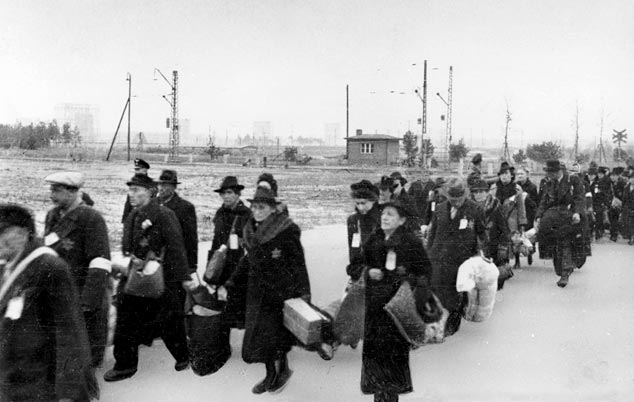
While almost the entire Jewish population of the occupied Soviet territories is falling victim to mass shootings, in 1941 Berlin is working on plans for the systematic murder of all European Jews. The deportation of Jews out of the Reich begins that October. The sequence of photos on the right shows the deportation of Franconian Jews from the Märzfeld railroad station on the Nazi Party Rally Grounds in November 1941.
To wipe out the large population of Polish Jews, the SS builds three death camps near the former Soviet border: Belzec, Sobibor und Treblinka. More Polish Jews are murdered in the death camps at Chelmno, Lublin-Majdanek and Auschwitz-Birkenau.
At Treblinka alone, more than 800,000 Jews are killed between July and October 1942. Ultimately the Auschwitz-Birkenau death camp, also known as "Auschwitz II," becomes the hub for the "final solution of the Jewish question in Europe." Here Jews from all over Europe will meet their deaths until the fall of 1944 – a total of about a million people.
In February and March 1943, 23,000 Sinti and Roma, mainly from the German Reich, are deported to Auschwitz and isolated in the "Gypsy Camp" there. Most die of hunger and disease; the last 3,000 survivors are sent to the gas chambers in August 1944.
A total of at least six million of the Jews who fall into German hands lose their lives – from manslaughter, murder, forced labor, malnourishment and disease. Somewhat more than half die in the death camps. The total number of Sinti and Roma who were killed is still uncertain, but estimates range between 100,000 and 500,000.



